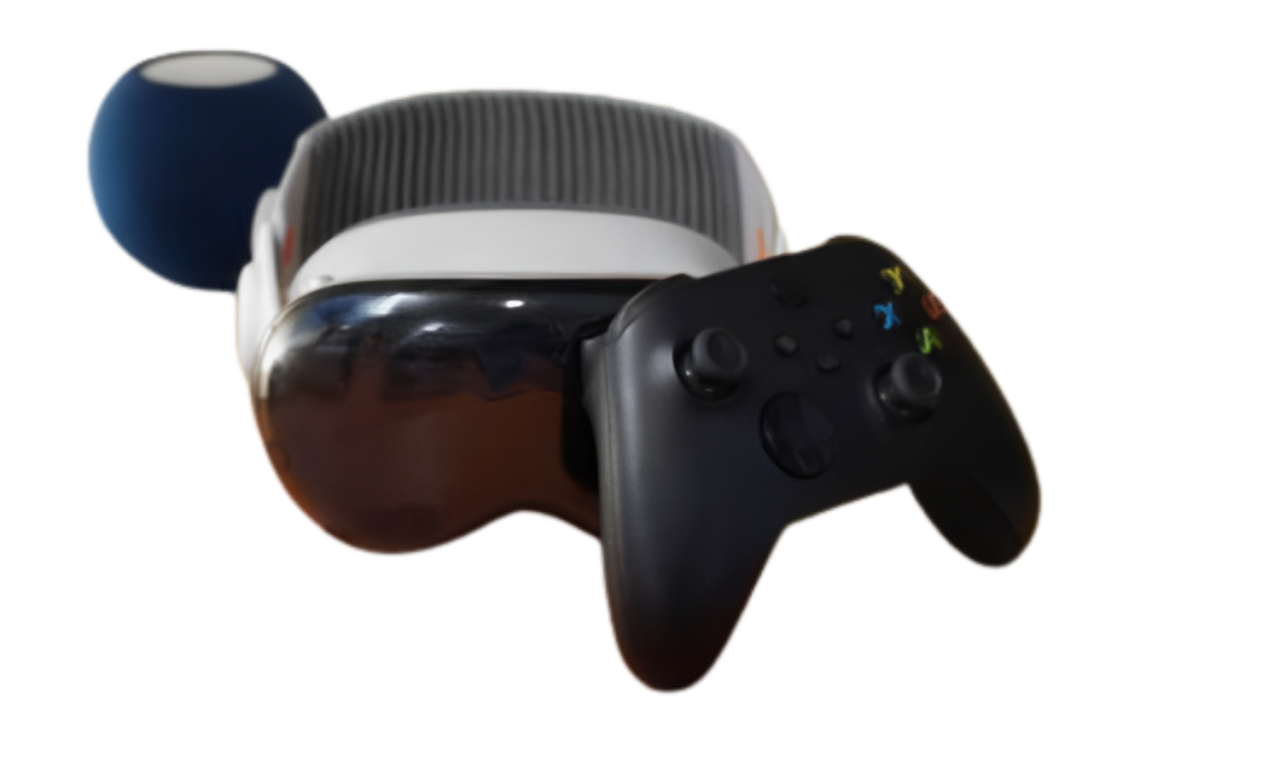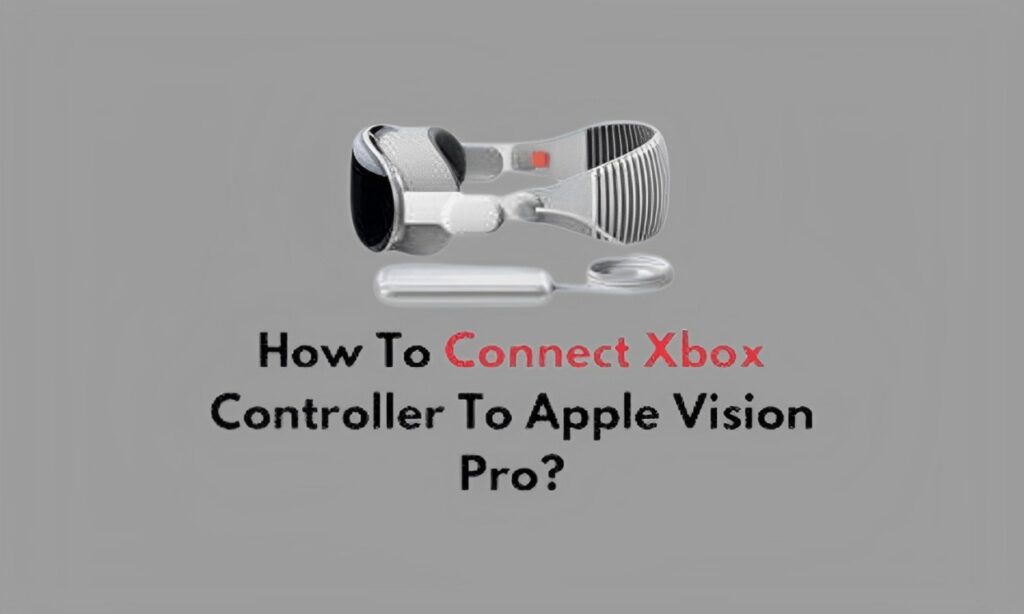
Newsletter Subscribe
Enter your email address below and subscribe to our newsletter

Enter your email address below and subscribe to our newsletter

Can You Play Xbox on Apple Vision Pro? A ground-breaking mixed reality headset has piqued the interest of technology aficionados all over the world. One of the most common queries is if it can be used to play Xbox games. The answer isn’t a straightforward yes or no. The Apple Vision Pro lacks built-in support for Xbox systems. Unlike standard VR headsets, which connect to a PC or gaming console, the Vision Pro is a stand-alone device with its own operating system and processor. This implies that you can’t just put your Xbox into the headset and expect to play games.
However, there are various workarounds available to bridge the gap between the Xbox ecosystem and this gadget. These approaches make use of cloud gaming services, remote play capabilities, and even future third-party applications to bring Xbox titles to the Vision Pro’s immersive environment. Understanding these alternate ways will help you select whether and how to play Xbox games on Apple’s revolutionary mixed reality headset.
Understanding the Limitations: While the product is supposed to be a standalone device with its own ecosystem, it does not fully cut players off from the rest of the gaming world. The Vision Pro’s interoperability with cloud gaming services allows you access to a broader choice of games, including those available through Xbox Game Pass. This means that gamers may be able to stream Xbox games directly to their Vision Pro, thereby expanding their gaming catalog beyond what is natively supported by the device. However, elements such as internet connection speed and latency are vital to consider because they have a substantial impact on the whole experience. A strong and consistent internet connection is essential for good gameplay because cloud gaming is based on real-time data streaming. Any latency or interruptions might break the immersion and enjoyment of the game. Furthermore, the specific characteristics of the cloud gaming provider in question will be taken into account. Some services may provide greater resolutions, frame rates, or features such as controller compatibility, whilst others may value affordability or accessibility over cutting-edge performance.
Despite these issues, cloud gaming is an exciting prospect for Apple Vision Pro users. It allows people to play games that may not be available on the device owing to hardware restrictions or compatibility difficulties. Imagine playing graphically demanding games that would ordinarily require a high-end gaming PC, all in the Vision Pro’s independent environment. Cloud gaming services can also provide players with access to enormous game libraries, allowing them to choose from a diverse range of titles across genres. This can be especially appealing for customers who do not want to be bound to the Vision Pro’s limited storage capacity or who prefer the freedom to play a large range of games without having to download and install them individually.
However, it is crucial to note that the cloud gaming experience on this product may not be exactly replicated when playing games locally on the device. The Vision Pro’s unique capabilities, such as hand tracking and spatial audio, may not be fully utilized in a cloud gaming environment. These capabilities are intended to work with games that are specifically tailored to the Vision Pro’s hardware and software. Cloud gaming services, on the other hand, are designed to be device-agnostic, which means they must work across a diverse variety of devices with differing capabilities. As a result, the immersive experience provided by hand tracking and spatial audio may be hampered while streaming games via the cloud.
Furthermore, the decision to use cloud gaming services on this device is based on personal preferences and interests. For gamers who value a large library of games and the ability to play titles that are not natively available, cloud gaming is an appealing choice. However, those who cherish the immersive experience provided by the Vision Pro’s unique features and native VR games may find the limits of cloud gaming to be a deal breaker.
Methods to Play Xbox Games on Apple Vision Pro:
While the Apple Vision Pro is designed to be used independently, its capabilities may extend beyond that. There is the prospect of further integration with other Apple products or even compatible gaming consoles, albeit this comes with constraints. For example, the device might serve as a wireless display for a Mac computer, allowing users to work on Mac apps while immersed in a virtual environment. This might be especially useful for jobs such as video editing, where users can view their work in a larger, more immersive format. Additionally, there may be the possibility of connection with Apple’s gaming services, such as Apple Arcade, which would provide to users with a broader choice of games and experiences. However, the degree of this integration and its impact on the overall user experience has still to be determined. Here’s a breakdown of potential scenarios:

Important Considerations:
Latency: Latency, or the time between a user’s input and the matching on-screen response, is an important aspect in the overall gaming experience. While the Apple Vision Pro promises to provide a flawless and immersive VR experience, using cloud gaming or remote play services to access Xbox games may result in perceptible latency. This delay can be attributable to a number of causes, including the time it takes data to travel between the user’s device, cloud servers, and game server. Furthermore, network congestion, Wi-Fi interference, and the processing capabilities of the streaming service’s servers can all cause higher delay. High latency can have a detrimental impact on gaming by making it harder to react fast to in-game events, potentially creating motion sickness, and generally reducing enjoyment of the experience. To alleviate latency difficulties, customers must have a consistent and high-speed internet connection, and the cloud gaming service should prioritize low latency through optimizations such as dedicated servers and efficient data compression.
Internet Connection: A reliable and fast internet connection is essential for a smooth cloud gaming and remote play experience on the device. A reliable internet connection ensures little lag, seamless gameplay, and high-quality visual and audio transmission. Network congestion, Wi-Fi interference, and the distance between the user and the game server all have an impact on the overall experience. Furthermore, the type of internet connection technology used can have an impact on performance. Wired Ethernet connections often have the lowest latency and most constant speeds because they provide a direct, dedicated conduit for data delivery. Wi-Fi connections, while convenient due to its wireless freedom, are more prone to interference from other devices and might experience changes in speed and stability, particularly at greater distances from the router. For the best cloud gaming experience on this device, a wired Ethernet connection is suggested.
Game Compatibility: Compatibility between Xbox games and cloud gaming services for the Vision Pro equipment might be limited. While some games may be played via cloud streaming, considerations such as game engine compatibility, input controls, and game-specific needs may provide obstacles. Not all Xbox games are optimized for cloud streaming or designed to function with VR headsets, which may cause performance issues, graphic glitches, or even outright incompatibility. Furthermore, the cloud gaming service itself may have restrictions in terms of supported games and platforms, reducing the number of Xbox titles available on the Vision Pro.
Subscription Costs: Cloud gaming services for Xbox games on this device will require additional subscription fees in addition to the Vision Pro purchase price. The subscription rates vary according to the service provider and the degree of access provided. When budgeting for their gaming setup, users should factor in the cost of both the Vision Pro and the cloud gaming subscription. This layered price system may limit the availability of cloud gaming for some customers, particularly those on a tight budget. Furthermore, the value proposition of a cloud gaming subscription is determined by the amount and quality of the available game library, the streaming service’s performance, and the overall user experience.
Alternative Methods: Although direct integration with gaming consoles such as Xbox may be limited or non-existent, there are other ways to potentially experience Xbox games on the Apple Vision Pro, albeit to various degrees of quality and comfort. These ways could include employing external capture equipment, streaming services, or the Xbox console’s remote play functionality. However, each of these systems presents its own set of obstacles, including latency, input lag, and potential compatibility issues. Finally, the optimal way to play Xbox games on the device will depend on aspects like as internet connection speed, hardware capabilities, and personal preferences.
Bridging the gap between Xbox and Apple Vision Pro:
While the Apple Vision Pro offers a substantial advancement in personal computing, smoothly integrating it into existing game environments presents unique problems. While a direct physical connection between the Xbox system and the Vision Pro is presently not possible, new options are emerging. Cloud gaming services, like as Xbox Cloud Gaming, provide a promising way to access a large catalog of Xbox titles via the headset. However, the quality of this experience is determined by several factors, including internet connectivity, game compatibility, and the cloud gaming platform used.
It is critical to recognize that the field of technology, particularly in gaming and streaming, is always evolving. Advances in network infrastructure, cloud computing, and hardware capabilities may open up new avenues for Xbox and Vision Pro interaction in the future. For example, the introduction of high-speed, low-latency networks could considerably improve the distant play experience, whilst advances in cloud rendering technologies may allow more graphically demanding games to be streamed effortlessly.
Furthermore, the creation of dedicated hardware or software solutions to enable Xbox game streaming to the Vision Pro cannot be completely disregarded. As the market for mixed reality devices grows, there is an opportunity for enterprising entrepreneurs to provide goods or services that bridge the gap between console and headgear.
Ultimately, the ability to play Xbox games on the Apple Vision Pro is a changing landscape influenced by technology improvements, consumer demand, and industry leaders’ strategic decisions. While present limits persist, the future promises more seamless and engaging gaming experiences across platforms.